ICAO delivers agreement on global airline flight tracking capability

The ICAO, upon the completion of a Special Meeting on Global Flight Tracking of Aircraft held in Montreal on 14th May, forged consensus among its Member States and the international air transport industry sector on the nearterm priority to track airline flights, no matter their global location or destination. Furthermore, the meeting established a framework for future efforts in this regard for the medium- and long-term.
Africa and Indian Ocean aviation safety

Driving further momentum on aviation safety and air navigation performance goals in its Africa-Indian Ocean (AFI) Region, the ICAO wound up a special two-day AFI Aviation Safety Symposium on 30th May in Dakar, Senegal.
High on the meeting’s agenda was a progress report and detailed review of the regional safety targets adopted by the Ministerial Conference on Aviation Safety in July 2012. The Abuja safety targets have become an inspiration to other regions of the world and are consistent with the revised global priorities established in ICAO’s Global Aviation Safety Plan.
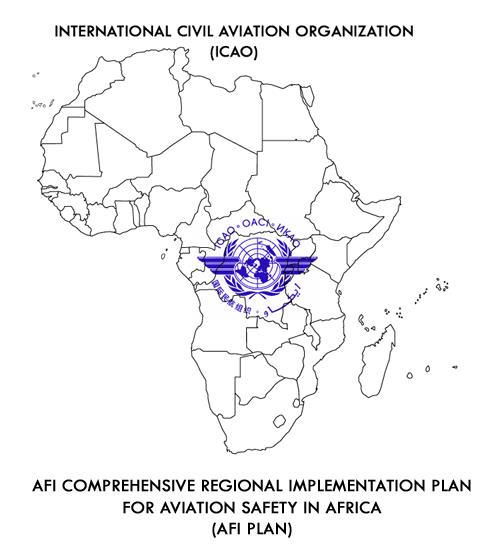
Colombian aids to navigation investment
It was announced on 4th June that the Colombian Ministry of Defence and Navy have improved the operational conditions and safety in the country of two most important ports: Buenaventura on Colombia’s Pacific coast and Cartagena in the Caribbean.
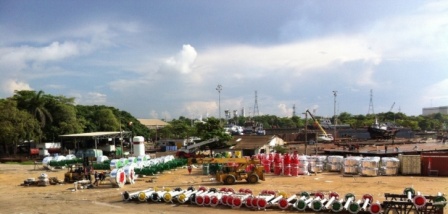 Buoy assembly in Cartagena
Buoy assembly in Cartagena
DIMAR (Colombia’s National Maritime Authority, responsible for safety at sea and on inland waterways) has carried out an investment of more than a hundred new buoys equipped with the latest technology in self-contained LED lights. These buoys are equipped with a new generation of satellite monitoring allowing real time status tracking, maximisation of service levels and placing the two Colombian ports at the forefront of aids to navigation infrastructure worldwide, it is claimed.
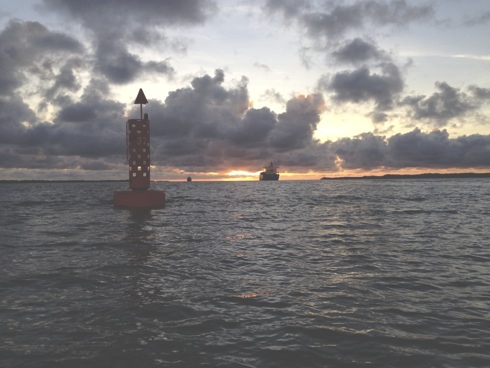 Type Guia W buoy in the port of Buenaventura
Type Guia W buoy in the port of Buenaventura
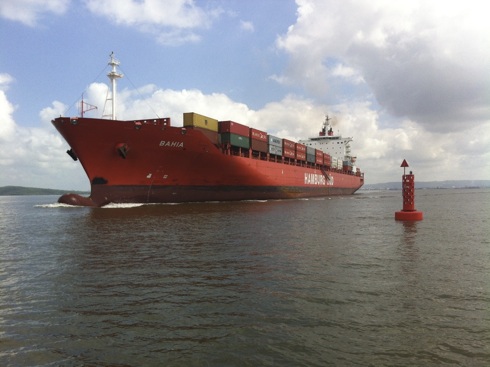 Type Guia W buoy in the port of Cartagena
Type Guia W buoy in the port of Cartagena
Singapore enquiry outcome
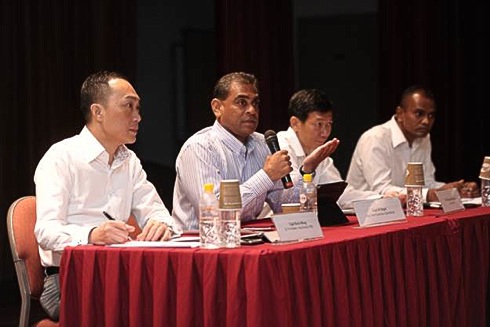 Captain M Segar, Assistant Chief Executive (Operations) MPA, speaking to the shipping community at the dialogue session
Captain M Segar, Assistant Chief Executive (Operations) MPA, speaking to the shipping community at the dialogue session
A press statement was issued by the Maritime and Port Authority of Singapore (MPA) on 29th May regarding collisions in its waters in January and February this year and extracts appear below.
The findings of the investigations showed that human error and poor judgement of the situation was the main cause of the three collisions. There was lack of situational awareness of the bridge teams, including the pilots, although MPA’s Port Operations Control Centre (POCC) had provided advisories and warnings of the traffic situation to the bridge teams.
IMO Maritime Safety Committee (MSC93)

The MSC, which met in its 93rd session from 14th to 23rd May, adopted important SOLAS amendments related to inert gas systems as well as amendments to a number of treaties to bring into force the mandatory IMO audit scheme. Work on passenger ship safety also continued.
The MSC approved, for consideration with a view to adoption at its November 2014 session (MSC 94), the draft new SOLAS chapter XIV “Safety measures for ships operating in polar waters”, which would make mandatory the Introduction and part I-A of the International Code for Ships Operating in Polar Waters (the Polar Code).
 IMO hq
IMO hq
Polar safety
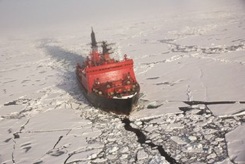 Ice breaker in North Pole waters
Ice breaker in North Pole waters
According to a new publication issued by the Swedish Club, on 28th May, operators transiting the polar regions are not always fully prepared for the unique challenges that they will face. Yet informing their P&I Club and Underwriter allows the owner to get access to hands-on advice that will reduce their exposure to these increased risks.
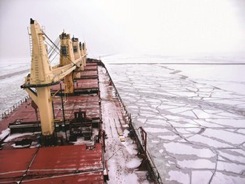 Bulk carrier on a frosted sea
Bulk carrier on a frosted sea
 Ice breaker towing cargo ship
Ice breaker towing cargo ship
Vacancy / job opportunity
The Satellite Geodesy research group of the Astronomical Institute of the University of Bern, (AIUB) Switzerland has received funding for a project on GNSS SATELLITE ORBIT MODELLING. There is funding in this project for the engagement of a PhD Candidate and a Research Assistant.
NATO concludes submarine rescue exercise
 Polish submarine ORP Sep – © NATO
Polish submarine ORP Sep – © NATO
On 23rd May the NATO submarine rescue Exercise Dynamic Monarch 2014 concluded in Gdynia, Poland, after eleven days of intense and realistic multinational training.
 HSwMS Haland – © NATO
HSwMS Haland – © NATO
Expertly hosted by Poland and conducted near Naval Base Gdynia, the exercise involved 18 nations providing seven ships, three submarines, helicopters, the NATO Submarine Rescue System, divers, medical personnel, and observers.
Dynamic Monarch tested international forces’ ability to respond to emergency situations involving a submerged, distressed submarine. The capability is vital for it enables the navies to be able to respond to the rare emergency and it provides for the everyday submariner and his family peace of mind that if a submarine were to become disabled rescue capability to save the ship’s company would be trained and available.
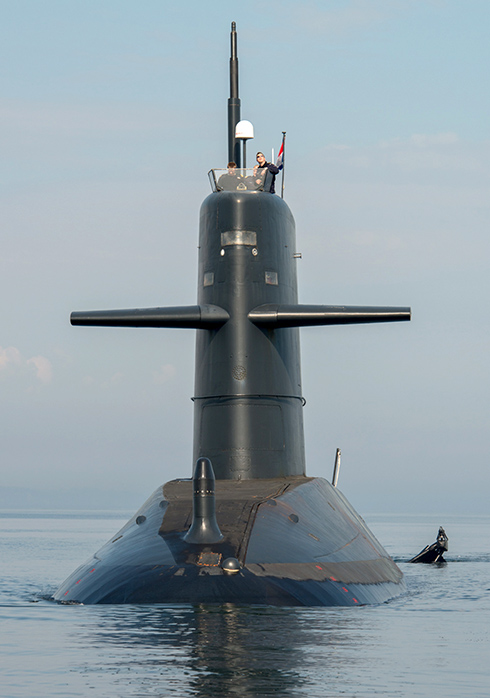 From The Netherlands, HNLMS Bruinvis – © NATO
From The Netherlands, HNLMS Bruinvis – © NATO
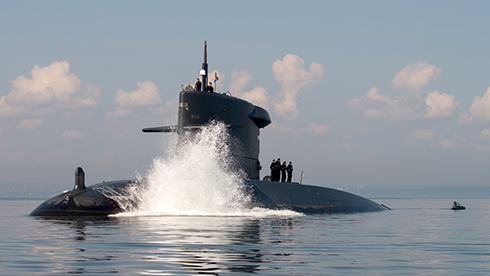 HNLMS Bruinvis ballasting – © NATO
HNLMS Bruinvis ballasting – © NATO
ESA’s Copernicus Sentinel 1
Europe’s Copernicus programme uses accurate and timely data from Earth observation satellites and other sources to provide key information services to improve the way the environment is managed, help mitigate the effects of climate change, enable the creation of new applications and services for citizens and businesses, and to safeguard everyday lives.
Images Copyright ESA/DLR
Satellites helping to modernise railways
Satellites will soon make train travel safer by improving how the networks are controlled in remote areas where ground equipment is too costly, according to a communiqué issued by the European Space Agency on 12th May.
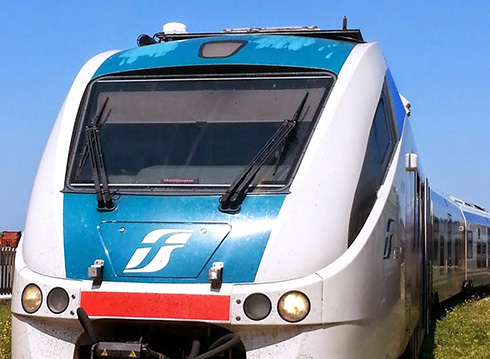 Satellite antenna on the cabin roof of a train
Satellite antenna on the cabin roof of a train
For the first time in Europe, a project co-funded by the ESA has shown how navigation and telecommunication satellites can be used together with existing rail signalling systems.
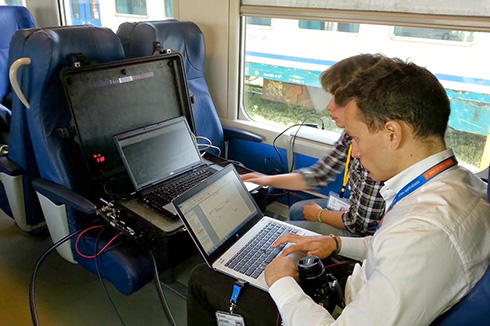 Engineers test the system
Engineers test the system
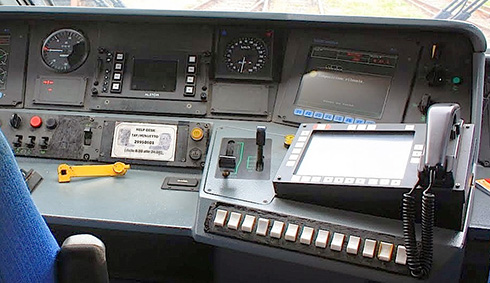 Train drivers receive information via satellite
Train drivers receive information via satellite
ESA Sentinel’s crucial help to Namibia
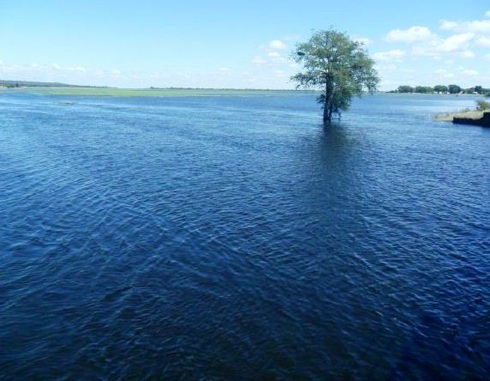 Flooded Namibia-Botswana border
Flooded Namibia-Botswana border
One of ESA Sentinel-1A’s first images was crucial in helping the Namibian authorities decide how to respond to a serious flood.
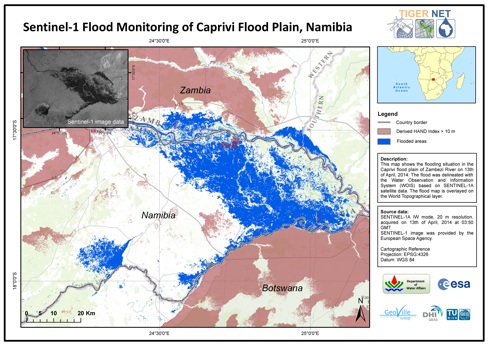 Namibia flood mapping by Sentinel 1A
Namibia flood mapping by Sentinel 1A
In recent years, floods in Namibia have affected hundreds of thousands of people, destroying homes and washing away vital crops and livestock. In this region, floods also bring further suffering in the form of disease, such as malaria and cholera.
Monitoring these devastating floods is normally hampered by the weather because sensors on aircraft cannot see through the cloud and are limited to relatively small areas. Trying to access remote flood-stricken areas on the ground is also impractical.
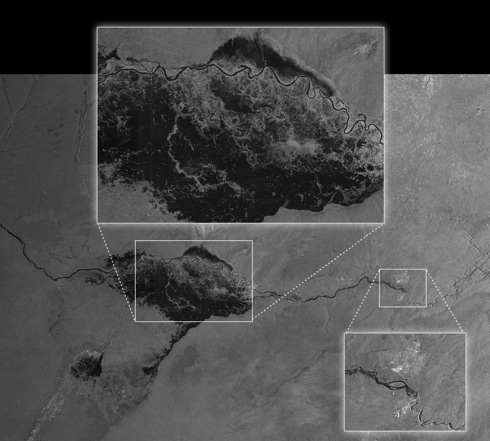 Namibia from Sentinel 1A
Namibia from Sentinel 1A
Galileo satellites arrive at Europe’s spaceport
Europe’s two latest Galileo navigation satellites touched down on 7th May at Europe’s Spaceport in French Guiana, ready for their joint launch this summer.
Packed safely within protective and environmentally controlled containers, the satellites were carried across the Atlantic aboard a 747 cargo carrier.
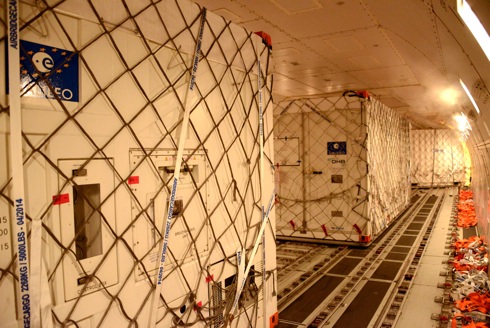 Twin Galileo containers as flown into French Guiana overnight 6th/7th May
Twin Galileo containers as flown into French Guiana overnight 6th/7th May
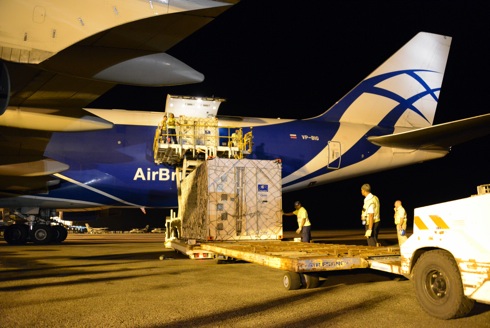 The Galileo satellites unloaded at Cayenne-Félix Eboué Airport in French Guiana
The Galileo satellites unloaded at Cayenne-Félix Eboué Airport in French Guiana
NTSB recommends better weather information
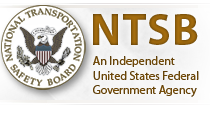
On 6th May the Washington-based National Transportation Safety Board (NTSB) issued nine recommendations addressing the need to provide more comprehensive pre-flight weather information to pilots.
These recommendations are based on NTSB accident investigations involving aircraft encountering weather conditions, such as adverse surface wind, dense fog, icing, turbulence, and low-level wind shear. Currently, although information on these conditions may exist, it is not always provided to pilots through NWS products during preflight weather forecasts.
NOAA and HF radar for safe navigation
The newest form of HF radar technology, seen here in the accompanying illustration of a coastal beach, is being used for the new NOAA surface current product.
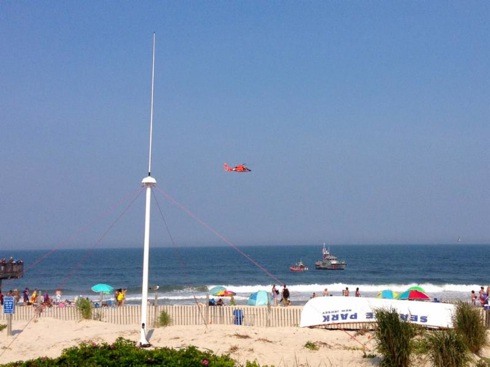 The newest form of HF radar technology, seen here on a coastal beach, is being
The newest form of HF radar technology, seen here on a coastal beach, is being
used for the new NOAA surface current product
A new NOAA National Ocean Service website will provide mariners near realtime coastal ocean surface current observations and tidal current predictions in coastal waters using high frequency (HF) radar, making marine navigation safer for mariners and commercial shippers.
Navigation safety information: VTS advice

It is understood that the British Government through its information service, to be found at www.gov.uk is now introducing users to navigation safety information, particularly VTS advice, and where it may be found.
Keying in to www.gov.uk/navigation-safety-for-uk-seafarers delivers various links at which information may be recovered.

IATA delivering aviation sustainibility through unity of purpose
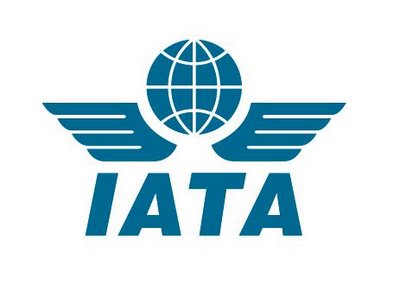 From its HQ in Geneva the International Air Transport Association (IATA) has called on all aviation stakeholders to stay focused and unified to deliver a vision for a sustainable aviation future.
From its HQ in Geneva the International Air Transport Association (IATA) has called on all aviation stakeholders to stay focused and unified to deliver a vision for a sustainable aviation future.
“Throughout the first 100 years of commercial passenger flight, aviation has demonstrated a proud history of teamwork and delivered innovation that has changed our world dramatically,” said Tony Tyler, IATA’s Director General and CEO, at the 7th Air Transport Action Group Environmental Summit in Geneva. He continued, “The strength of the aviation industry’s response to the environmental challenge has been founded on our unity of purpose. The industry has been clear with its call for a global environmental solution and a commitment to three sequential carbon-reduction targets. Working together, we have demonstrated progress with more efficient operations, investments in technology and by driving improvements in the use of infrastructure.”
ICAO and WCO joint conference

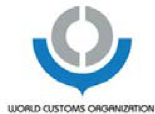 It was announced from Montreal on 17th April that the International Civil Aviation Organization (ICAO) and the World Customs Organization (WCO) had completed a joint conference on air cargo security and facilitation in Manama, Bahrain reinforcing their common message that a secure and efficient air cargo supply chain is essential for international trade and world economic development.
It was announced from Montreal on 17th April that the International Civil Aviation Organization (ICAO) and the World Customs Organization (WCO) had completed a joint conference on air cargo security and facilitation in Manama, Bahrain reinforcing their common message that a secure and efficient air cargo supply chain is essential for international trade and world economic development.
Resilient PNT forum report
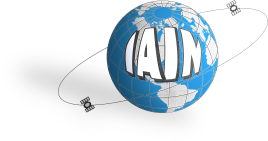
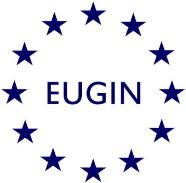
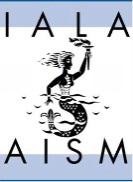
The Resilient PNT Forum was organised by the International Association of Institutes of Navigation (IAIN), the European Group of Institutes of Navigation (EUGIN) and the International Association of Marine Aids to Navigation and Lighthouse Authorities (IALA). Attendance was approximately 65, from the maritime, aviation and land transport sectors, as well as timing and finance.
Following the presentations in the opening session, Prof Brad Parkinson gave a short introduction to the discussion. He used the US situation to illustrate the difficulty of obtaining political commitment, in spite of the clear technical, economic and safety case for resilient PNT.
The discussion covered the broad topics: What is Resilient PNT? The Need for Resilient PNT, Strategy for Resilient PNT, Plan of Action and Conclusions. The report contains notes taken on those discussions.
Resilient PNT forum report
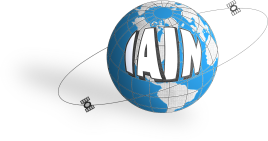
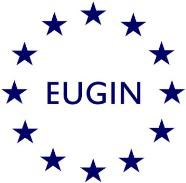

The Resilient PNT Forum was organised by the International Association of Institutes of Navigation (IAIN), the European Group of Institutes of Navigation (EUGIN) and the International Association of Marine Aids to Navigation and Lighthouse Authorities (IALA). Attendance was approximately 65, from the maritime, aviation and land transport sectors, as well as timing and finance.
Following the presentations in the opening session, Prof Brad Parkinson gave a short introduction to the discussion. He used the US situation to illustrate the difficulty of obtaining political commitment, in spite of the clear technical, economic and safety case for resilient PNT.
The discussion covered the broad topics: What is Resilient PNT? The Need for Resilient PNT, Strategy for Resilient PNT, Plan of Action and Conclusions. The report contains notes taken on those discussions.
ICAO annual safety report

The Montreal-based International Civil Aviation Organization (ICAO) released its annual Safety Report on 10th April, reflecting very positive global aviation safety outcomes for 2013.
The global accident rate came in at 2.8 per million departures versus 3.2 per million in 2012, representing a 13% decrease. The number of fatal accidents involving scheduled commercial operations remained steady at nine during 2013, with total fatalities down to 173 compared to 388 in 2012 – a 55% decrease. Using 2010 as a baseline, fatalities were down by 72%.
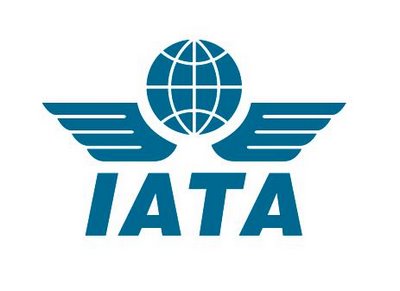 Building on their previous work in the area, ICAO and the International Air Transport Association (IATA) also published a comprehensive joint aviation safety analysis covering 2013 in their reports – a first for both organizations.
Building on their previous work in the area, ICAO and the International Air Transport Association (IATA) also published a comprehensive joint aviation safety analysis covering 2013 in their reports – a first for both organizations.
Transas contract with Glasgow college
It was announced on 14th March that Transas Marine and City of Glasgow College had signed a contract to supply a simulation complex. The simulation centre in the Riverside campus which is under construction, will be one of the largest, the most up to date and most technically advanced simulation suite in the UK, it is claimed. Training courses are expected to start in Autumn 2015.
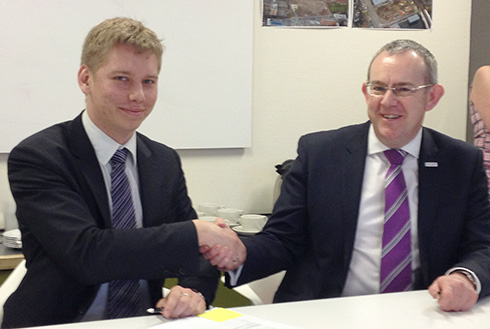 The signing of the contract between Transas Marine and City of Glasgow College
The signing of the contract between Transas Marine and City of Glasgow College
The ship simulator suite forms a core part of the new Riverside Campus and the complex nature of the equipment and fit out require a high degree of integration with the New Campus NPD Co., (the Scottish Government’s Non-Profit Distributing revenue funded procurement model) design. Transas provided technical integration input into the refinement of design for the New NPD Campus project.
The suite will include a full mission engine room simulator; simulator labs for studying of electronic navigation systems; GMDSS training; liquid cargo handling and DP operations’ training.
Two new Panama beacons
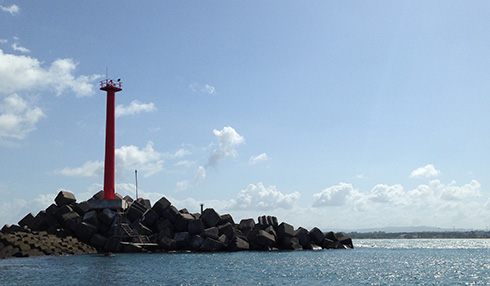
Aids to navigation specialist Almarin has carried out the design, manufacture and supply of two beacons for the access channel to Manzanillo Bay in the province of Colon (Panamá). The Spanish contractor Delta 9 awarded this project to Almarin, which involved the design and supply of 16metre focal plane ALT7 model towers, with corresponding lights, AIS systems and photovoltaic energy systems.
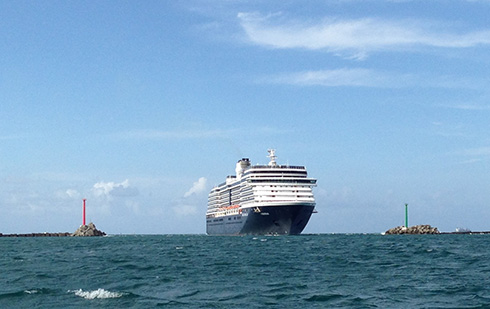
Galileo and electric propulsion
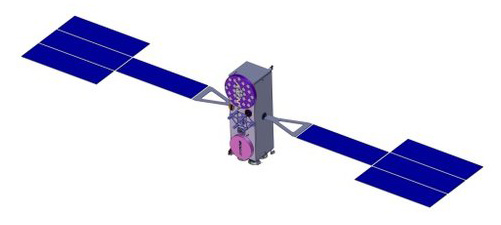 Galileo second generation – photo © ESA
Galileo second generation – photo © ESA
Future Galileo navigation satellites might adopt electric propulsion to reach their final orbits, with the weight savings offering larger payloads and a broader range of services in the 2020s, it was announced by ESA on 7th April 2014.
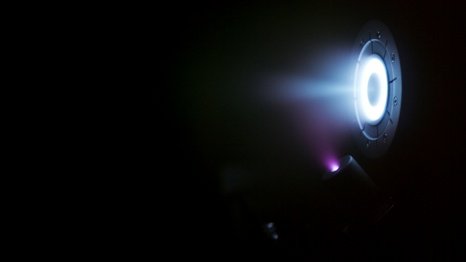 Electric thruster test – photo © ESA
Electric thruster test – photo © ESA
This would offer several advantages. Freeing up mass by doing without the rocket’s upper stage means more satellites could be carried by individual rocket: up to three by Soyuz, while Ariane 5s carrying commercial telecom satellites could piggyback a quartet as secondary passengers. The lightweight Vega launchers might loft individual satellites.
At the same time, the mass of each satellite could still increase – up to 1500 kg or more from the current 700 kg. Enlarging the satellite would enable an expanded navigation payload to support a greatly extended range of Galileo services.
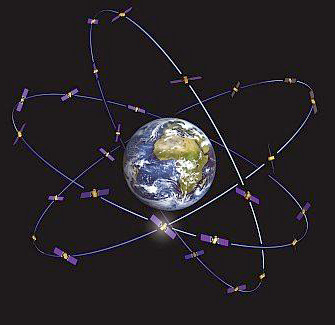 Galileo’s three orbital planes – photo © ESA
Galileo’s three orbital planes – photo © ESA
ESA launches Sentinel-1A
The ability of European citizens, policymakers and service providers to access key environmental data on a routine basis will take a major step forward following the launch on 3rd April of ESA’s Sentinel-1A satellite. This 2.3 tonne satellite lifted off on a Soyuz rocket from Europe’s Spaceport in Kourou, French Guiana at 2102 GMT (2302 CEST).
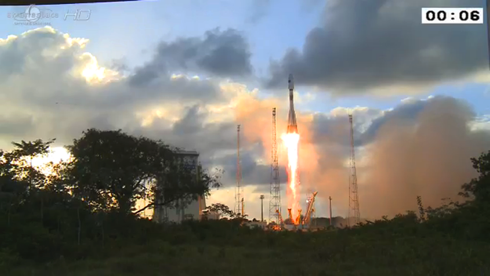 Sentinel-1A lift off – photo © ESA
Sentinel-1A lift off – photo © ESA
“Sentinel-1A opens a new page in the implementation of Copernicus, the second
EU flagship space initiative, after the Galileo positioning system,” said Jean-Jacques Dordain, Director General of ESA. “The Copernicus programme will provide European citizens with the most ambitious space-based services in the world for environmental and security applications.”
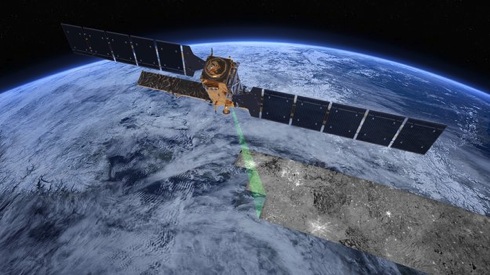 Radar vision – photo © ESA
Radar vision – photo © ESA
Kongsberg Seatex ‘Blue Force’ AIS
 The AIS 300BF is tailor-made for vessels undertaking demanding coast guard, anti-piracy, navy and border police operations – © Torbjørn Kjosvold – Forsvarets mediearkiv
The AIS 300BF is tailor-made for vessels undertaking demanding coast guard, anti-piracy, navy and border police operations – © Torbjørn Kjosvold – Forsvarets mediearkiv
Kongsberg Seatex, a Kongsberg Maritime subsidiary and a global leader in the development and production of precision technology for marine applications, has announced the launch of a new generation of Blue Force (BF) Automatic Identification Systems (AIS), the AIS 300BF.
This AIS 300BF is tailor-made for vessels undertaking demanding coast guard,
anti-piracy, navy and border police operations. Simple to install and maintain, the Class A mobile station allows friendly forces to identify vessels, while restricting the transmission of their own AIS information.
 The AIS 300BF supersedes the current AIS 200BF unit
The AIS 300BF supersedes the current AIS 200BF unit
